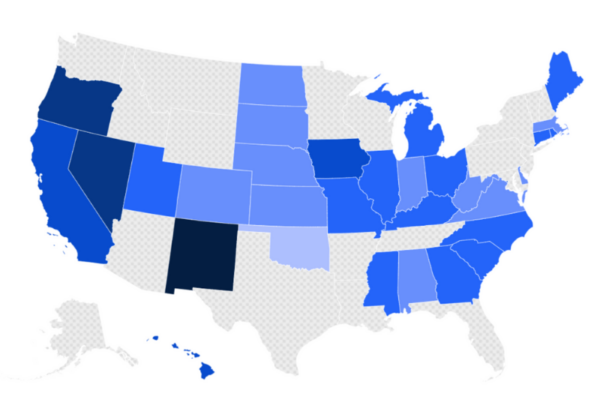Updated 2/7/2025
Chronic absenteeism continues to be a significant issue for schools and districts nationwide. Although many states are making progress in reducing chronic absenteeism—defined as students missing 10 percent or more of the school year—they have yet to return to pre-pandemic attendance levels, which were already high in many states.
FutureEd has developed a tracker that monitors chronic absenteeism rates from the last pre-pandemic school year, 2018-19, through the 2021-22, 2022-23, and 2023-24 school years.
To date, 36 states and the District of Columbia have released chronic absenteeism data for the 2023-24 school year. All but five reported improvements compared to the previous year, with Nevada and New Mexico leading the way, each achieving a roughly 9-percentage-point decline in absenteeism. In contrast, Louisiana’s absenteeism rate has continued to rise since the pandemic and is now nearly 3 percentage points higher than last school year. Mississippi and Florida experienced slight increases, while rates in North Dakota and South Dakota remained unchanged. No state has fully returned to pre-pandemic levels, though West Virginia is the closest, with its rate just 3.5 percentage points above pre-pandemic levels.
Last year, most states demonstrated some recovery from the pandemic-related spike in absenteeism observed in the 2021-22 school year. Among the 44 states and the District of Columbia that released 2022-23 data, 33 reported improvements of five percentage points or fewer in chronic absenteeism rates. Michigan saw the most significant recovery, with a 7.7 percentage point decrease to 30.8 percent, though this remains well above its 2018 rate of 20 percent.
Chronic absenteeism often signals that students are experiencing untreated health needs, transportation problems, mental health issues, or other significant challenges. When many students attend school irregularly, teachers can’t move through the curriculum at their usual pace, which hurts the academic progress of students who are attending regularly as well as absentees.
Because chronic absenteeism is defined as missing 10 percent or more of the school year, states and districts have traditionally gathered and released rates of chronic absence after the school year has ended. The lack of real-time data may be hurting efforts to address the absenteeism problem.
As of August 2024, Rhode Island is the only state that had developed a publicly available, real-time dashboard identifying the number of students in each school who were on track to miss more than 10 percent of the school year. This timely data has been key to the state’s efforts to combat chronic absenteeism.

